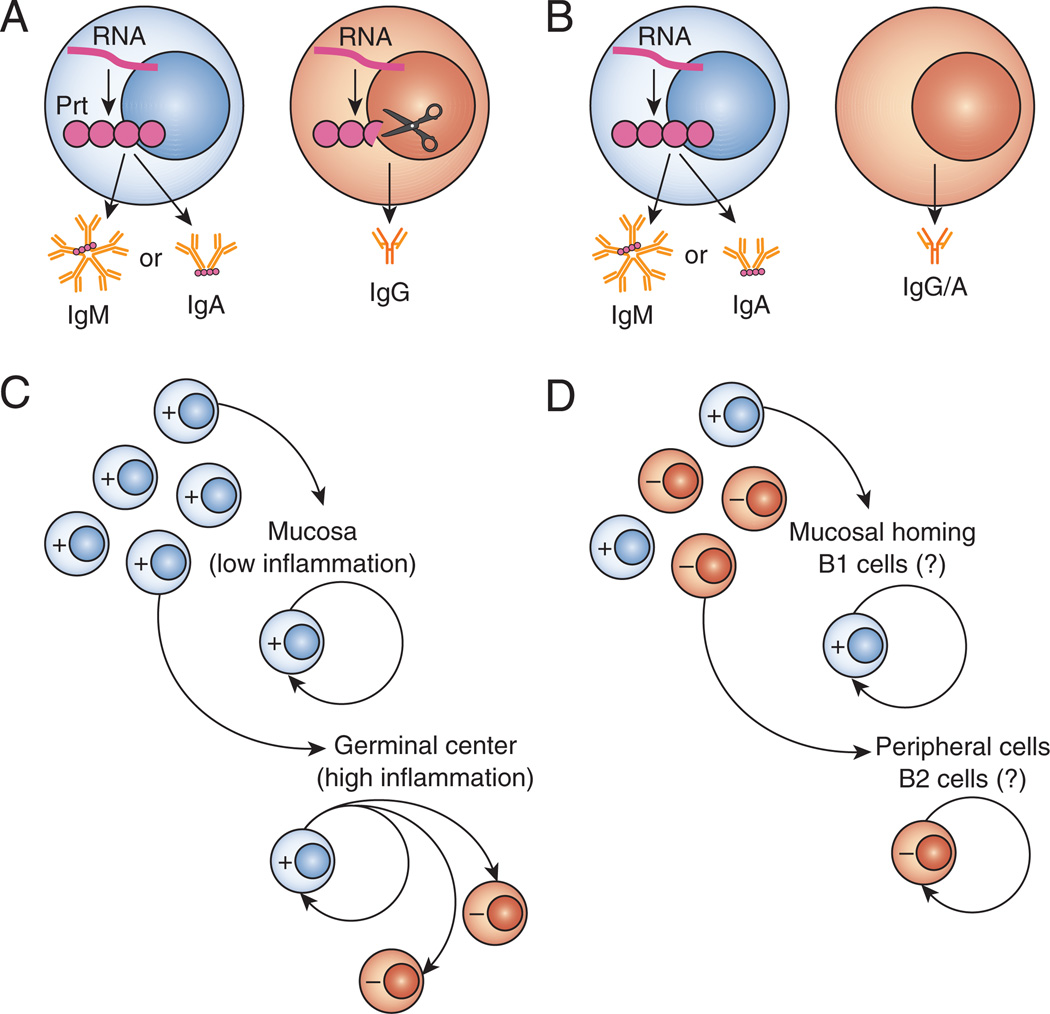Figure 2. Models of J-chain expression.
(A–B) The presence or absence of J-chain transcript (wavy line) and protein (filled circles) in J-chain+ cells (blue) and J-chain− secretory B cells (pink) are shown. Pentameric IgM and dimeric IgA would be secreted from cells expressing both RNA and protein (blue, A and B). In IgG-secreting cells, J-chain RNA may still be present but J-chain protein is degraded by proteases (scissors) when it does not associate with secretory Ig (pink, A) (65, 67). Alternatively, perhaps neither J-chain RNA nor protein is present in cells secreting monomeric Ig (in this case either IgG or IgA, pink, B) (70). Work from the Brandtzaeg lab suggests that all activated B cells express J-chain by default (blue, C), and only after prolonged clonal proliferation or germinal center reactions do the activated B cells become J-chain-negative (pink, C) (16, 75, 76). Conversely, evidence from other groups suggests that some B cells are marked at an early stage to be either J-chain+ (blue) or J-chain− (pink, D (20)) and that the J-chain+ (blue, D) B cells may be derived from a different lineage than J-chain− cells (90).

